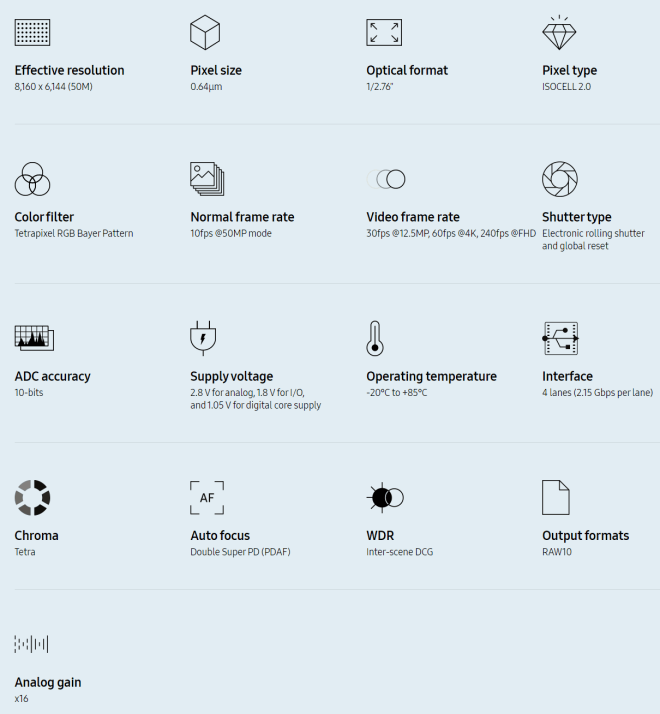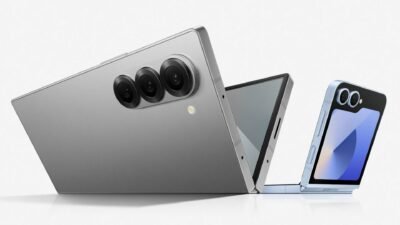Samsung Announced 50 Megapixels Sensor That Is Compact Enough To Remove Hump

Samsung has presented a new camera sensor for smartphones that should offer even more megapixels in an even smaller size and able to remove the current humps on smartphones with the big camera sensors. Thanks to a pixel edge length of just 0.64 micrometers, the new sensor should be flat and small and thus enable thinner smartphones.
As Samsung announced today, mass production of the new Isocell JN1 Mobile Imaging Sensor has recently started. This is the first camera sensor for mobile devices such as smartphones and tablets in which the edge length of the individual sensor pixels has been reduced to just 0.64 micrometers. So far, the smallest sensor pixels in smartphone cameras have always been in the range of 0.7 or 0.8 micrometers.
Read This: Samsung Might Skip the Under Display Camera for the Galaxy S22
According to Samsung, the Isocell JN1 is primarily intended to enable high-resolution smartphone cameras with around 10 percent thinner camera modules. The sensor is apparently more intended for mid-range devices than for high-end models, at least if you follow Samsung’s marketing materials. Thanks to the sensor, you should no longer have a pronounced camera hump in the future, at least that’s the manufacturer’s promise.
Smaller pixel sizes should be compensated for by binning
The JN1 sensor with its 50 megapixels, more precisely 8160×6144 pixels, should offer functions such as Double Super Phase Detection autofocus, SmartISO, and Isocell 2.0. With the help of the last-mentioned technology, the sensor should offer around 16 percent more light sensitivity, as the delimitation between the individual sensor pixels has been improved and less stray light is incident.

With the improved phase detection autofocus, Samsung wants to achieve faster focusing, with up to 60 percent less light being required for this. The new JN1 camera sensor supports, among other things, 4K videos with up to 60 frames per second and Full HD videos with up to 240 frames per second.
Read More: Samsung Rolling Out Android 11 Update to Galaxy A20 in Russia
According to Samsung, the JN1 was developed in cooperation with customers from the smartphone market, so that it can be installed in existing device designs instead of the previous 1 / 2.8 “inch sensors. The device manufacturers can therefore also use the chip as a front camera, ultra-wide-angle or
Install a telephoto zoom sensor if you wish. Despite the high resolution, no photographic miracles should be expected here, as the rule that larger sensor pixels capture more light and therefore deliver better images will continue to apply. Pixel binning can be bypassed, in which four sensor pixels are combined into one pixel of the finished photo using the software.
Digital marketing enthusiast and industry professional in Digital technologies, Technology News, Mobile phones, software, gadgets with vast experience in the tech industry, I have a keen interest in technology, News breaking.











